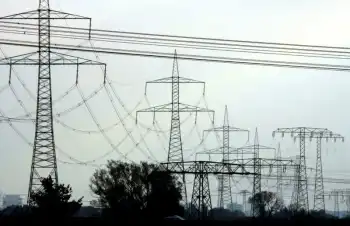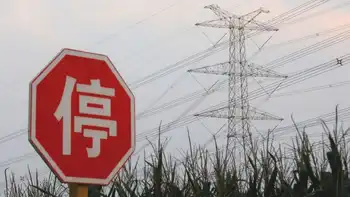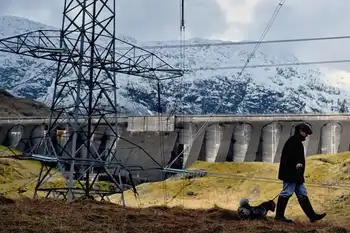New rules jeopardize wind, solar projects
The program pays a premium for renewable energy coming from wind, solar, biogas or small hydro projects 10 megawatts or less in size. So far the Ontario Power Authority, which administers the program, has approved contracts for 1,300 megawatts of projects – 30 per cent higher than the original target.
The provincial government calls the response incredible. The power authority calls it a success story. Some project developers, however, are calling their lawyers. Things, it appears, could get nasty.
Recently, the power authority announced some new rules in advance of a planned review of the popular program. Some of the changes make sense, such as streamlining administration of the program to make it simpler. Interim deadlines are also being set to ensure projects move forward in a more timely fashion.
But citing the need to make the program "open to more participants" – that is, small community co-operatives – the power authority has decided to set up a few roadblocks for larger developers that have been lured to the premium prices the government pays for wind and solar power.
These developers can no longer deploy more than 50 megawatts of projects at any given time. They are also limited to a single 10-megawatt project per transformer station, amounting to a major restriction on where proposed projects can be located.
It's easy to see the rationale for this. There have been complaints that the big guys are squeezing out the smaller community co-operatives when it comes to gaining access to limited-capacity distribution and transmission lines. But the blame could be just as much targeted at the government and utilities, which have fallen behind on investment in grid infrastructure.
"The power authority clearly underestimated the market readiness of wind and solar power and so they were surprised when they got more power offered to them in the first year of the program than they thought they'd get in 10 years," says Keith Stewart, an energy analyst from WWF-Canada.
"Not surprisingly, there are some growing pains and they've slammed on the brakes... my fear is that they are looking at how they can limit the program so they don't exceed their self-imposed cap on green power."
By "self-imposed cap," Stewart is referring to a belief in some circles that the power authority sees the government's target for renewables as a ceiling, rather than a floor.
What's important in all this is that 1,300 megawatts of projects have been contracted, not built. By slowing down the program, putting up barriers, and generally making life more difficult for big developers – many of whom make up a vast majority of projects currently approved – the power authority could end up seeing some of those same projects abandoned.
Developers like certainty, and they rely on it to attract investment. When Ontario launched its standard offer program, a first in North America, developers and investors were lured to the certainty of price and the stability of policy. They could go after several, potentially dozens, of small projects but feel secure enough to place bulk orders for equipment – whether wind turbines or solar panels – to assure supply in industries with two- and three-year waiting lists.
Perhaps the program wasn't designed as intended, but once it was launched it set many wheels in motion.
By changing the rules, much of that certainty is gone. You can't blame some investors for feeling duped. Sources say SkyPower, one of the leading developers of wind and solar projects under the standard offer program, cancelled a $500 million wind-turbine order from General Electric because of the new restrictions it faces.
Kerry Adler, chief executive of SkyPower, wouldn't confirm if the order had been cancelled, but he did acknowledge that the new rules change the game for his company. "SkyPower is very disappointed," said Adler, pointing out that his company was never consulted about the changes. "The confusion and challenges as a result of these rules have put hundreds of jobs at risk and has forced us to rethink our strategy for the province of Ontario."
SkyPower has 17 wind and solar contracts already approved – and grandfathered – but more than 50 sit in the queue with Hydro One. Adler says under the new rules most of those will have to be abandoned.
The power authority says developers such as SkyPower can still take part in more formal requests for proposals, which are designed for larger projects, but these bidding events tend to require millions of dollars just to participate with no guarantees of success.
Besides, SkyPower says its 10-megawatt projects were spread out in different areas across the province and can't be lumped together as larger, 100-megawatt-plus projects. Only the standard offer program allows many of Skypower's projects to be economical, says Adler.
So here we are – Ontario has one of the best renewable-energy programs on the continent, it prematurely claimed success, and now it's threatening the good progress it has made by shying away from that, well... success.
The program as it was had problems that needed fixing, but the power authority could now be making it worse. In the words of one industry insider: "It appears they are using an axe when a scalpel was required."
Just recently, the power authority also issued a request for a proposal to the legal community. The agency is seeking external legal counsel for its standard offer programs. Surely it's just a coincidence.
Related News

Alberta's Path to Clean Electricity
ALBERTA - In a recent development, Alberta finds itself at a crossroads between provincial autonomy and federal mandates concerning clean electricity regulations. The province, known for its significant oil and gas industry, faces increasing pressure to align its energy policies with federal climate goals set by Ottawa.
The federal government, under the leadership of Environment Minister Steven Guilbeault, has proposed regulations aimed at reducing greenhouse gas emissions and transitioning towards a cleaner energy future. These regulations are part of Canada's broader commitment to combat climate change and achieve net-zero emissions by 2050.
The Federal Perspective
From Ottawa's standpoint, stringent regulations…





